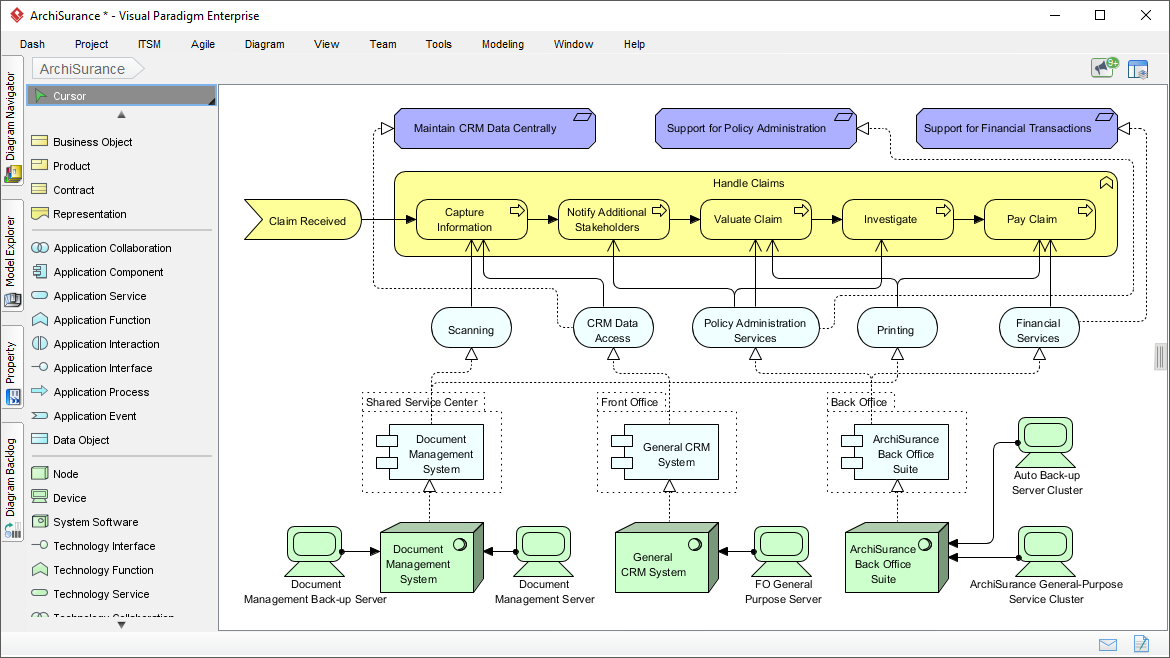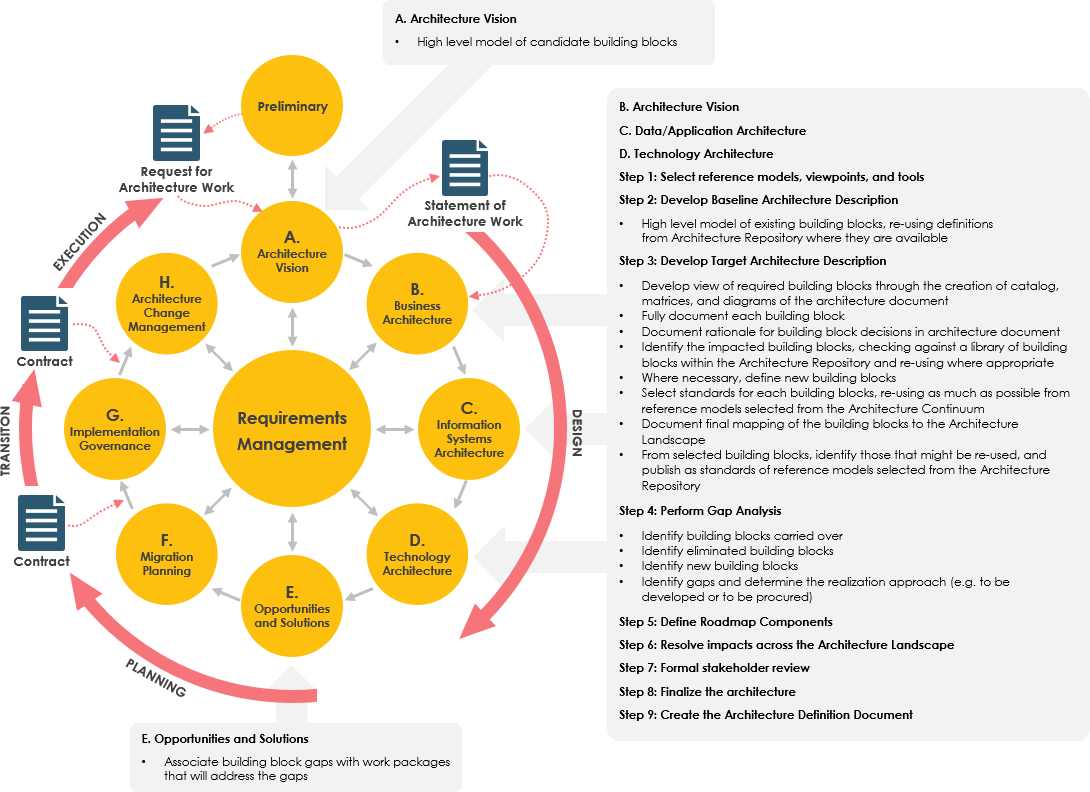Understanding the Differences between ArchiMate and TOGAF: A Guide for Enterprise Architects
As an enterprise architect, you are likely familiar with ArchiMate and TOGAF, two of the most widely used modeling languages for enterprise architecture. While both ArchiMate and TOGAF have many similarities, they also have important differences. In this article, we’ll explore these differences to help you choose the right modeling language for your needs.
What is ArchiMate
ArchiMate is a modeling language for enterprise architecture that provides a common language and framework for describing, analyzing, and visualizing the relationships between the elements of an enterprise architecture. ArchiMate is an open, non-proprietary language, and is widely adopted by organizations worldwide.

What is TOGAF?
TOGAF is a framework for enterprise architecture that provides a comprehensive approach for developing and managing enterprise architecture. TOGAF includes a set of best practices, methods, and tools for enterprise architecture, as well as a modeling language for describing enterprise architecture. TOGAF is owned and maintained by The Open Group, a global consortium of organizations.

Key Differences between ArchiMate and TOGAF
- Focus: ArchiMate focuses specifically on the modeling of enterprise architecture, while TOGAF provides a more comprehensive approach to enterprise architecture that includes best practices, methods, and tools.
- Modeling Language: ArchiMate is a standalone modeling language, while the modeling language in TOGAF is just one component of the larger TOGAF framework.
- Openness: ArchiMate is an open, non-proprietary language, while TOGAF is owned and maintained by The Open Group.
- Adoption: ArchiMate is widely adopted by organizations worldwide, while TOGAF is used primarily by large organizations with complex enterprise architecture needs.
Choosing the Right Enterprise Tool for Your Needs
When choosing between ArchiMate and TOGAF, the key factor to consider is your specific enterprise architecture needs. If you need a simple, flexible, and widely adopted modeling language for enterprise architecture, ArchiMate is likely the better choice. If, on the other hand, you need a comprehensive approach to enterprise architecture that includes best practices, methods, and tools, TOGAF is the better choice.
Visual Paradigm: The Ultimate Solution for ArchiMate and TOGAF Modeling
Visual Paradigm is a comprehensive modeling and diagramming platform that supports both ArchiMate and TOGAF. Visual Paradigm provides enterprise architects with the tools and resources they need to effectively design, manage, and communicate enterprise architecture using either ArchiMate or TOGAF.
With Visual Paradigm, you can create and edit ArchiMate diagrams using an intuitive, drag-and-drop interface, and leverage a rich set of modeling symbols and notations to accurately represent the elements of your enterprise architecture. Visual Paradigm also provides a range of collaboration and teamwork features, so you can easily share your ArchiMate diagrams with other members of your team and get feedback and input in real time.

For those working with TOGAF, Visual Paradigm provides a comprehensive suite of tools and resources that make it easy to implement the TOGAF ADM. Visual Paradigm provides support for the entire TOGAF ADM, from creating a high-level enterprise architecture to defining and designing the architecture components, to validating the architecture and monitoring its implementation. Visual Paradigm also provides a range of tools and templates that make it easy to create TOGAF deliverables and reports.

Visual Paradigm supports both ArchiMate and TOGAF, providing enterprise architects with the tools and resources they need to effectively design, manage, and communicate enterprise architecture using either modeling language. Whether you choose ArchiMate or TOGAF, Visual Paradigm provides the support and resources you need to succeed.
Conclusion
In conclusion, ArchiMate and TOGAF are both powerful modeling languages for enterprise architecture, but they have important differences. When choosing between ArchiMate and TOGAF, consider your specific enterprise architecture needs and choose the modeling language that best meets your needs. Whether you choose ArchiMate or TOGAF, make sure you have the right tools and resources to support your enterprise architecture work.

